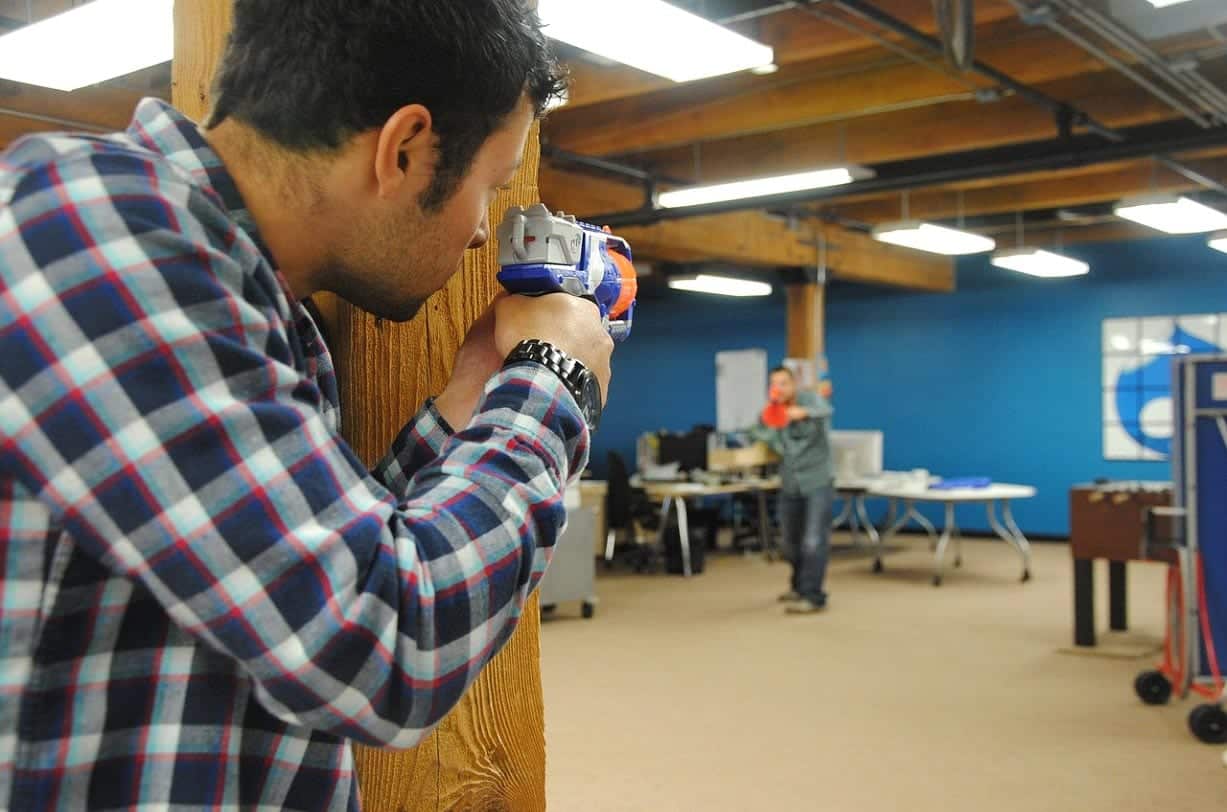What is gamification in sales

When we were young, we played a lot. From hide and seek to chess, it was a vital part of our childhoods. I still enjoy a good game of monopoly, and I’m sure you have your guilty pleasure game too. Nobody would blame you because these games are fun.
But have you ever thought about why? Why do kids, and even adults at times, spend a good deal of their day trying to win fake paper money? What makes these games addictive? The answer is more straightforward than you may think.
It’s human nature. People want to be the best. We want to beat everyone else, and then want to be rewarded for it. We live for competition. It’s why the gaming industry has survived for so long and will continue to grow.
Over the years, it has had to evolve, but whether you play Pay Day or Fortnite, the basic principle is the same. Pit people against each other, and they will struggle to get to the top.
It also doesn’t matter if you’re a GenZ or a millennial, work in sales or marketing; we are all human. And so we have the same human tendencies. Sales gamification refers to taking this concept and introducing it in the sales function. Which begs the question, can gamification boost sales?
What is gamification?
We define gamification as the use of gameplay mechanics for non-game applications. There are two main concepts in gameplay mechanics: competition and rewards. If a company uses both well, gamification can boost sales significantly.
By now, I’m sure you’re wondering how to gamify sales and how to use gamification to increase sales. So, without further ado, let’s get into some sales gamification examples.
Rewards
Rewards are straightforward. Multiple studies carried out over the years have proven the benefits of positive reinforcement. The idea is simple. People like being appreciated. And it’s even better when done publicly. Whenever a salesperson performs well, you give them a prize. Some forms used by companies are:
- points
- badges
- leaderboards
- performance graphs
In games, we try to win gems, gold, or some other abstract item. It isn’t worth anything; however, we still like winning it. Just like that, these rewards are important to the people who win them, making it one of the best sales gamification ideas.
Competition
One step beyond rewards is competition, one of the most popular sales gamification techniques. More than half the fun of any game is to beat other players. Sales reps are already super competitive. Making rewards for completing tasks visible to other workers can encourage them to compete. Even the best salespersons can get stuck in a rut and need a push at times.
Importance of sales gamification
So if gamification generally pushes people to work harder, it’s helpful in all types of works forces. Why is it so crucial in the sales field? What sets sales gamification apart? Well, the structure of sales jobs is different. There are two things to take note of here.
1) Job Requirements
Sales jobs are repetitive. All-day long your workers call people, convince them to buy a good and then start over. Even if your office has a fun environment, the job itself gets redundant. If there isn’t anything exciting about it, they are likely to stop caring and start slacking. This would be bad for you and your company. Gamification keeps things interesting.
2) Human contact
For most office jobs, you don’t meet your customer. They only exist in meeting rooms and on charts, never in close contact with you. In sales, however, workers have to regularly talk to customers and get them to listen.
Calling people you don’t know to talk about products you didn’t make isn’t very interesting. But the people on the other end of the line to believe that you can be trusted. Because if they don’t, they won’t buy anything.
So, salespersons need to sound interested. For the most part, they can fake their enthusiasm. And it probably works for the first calls, maybe twenty. But by the time they get to their thirtieth, they get tired, and the facade falls apart.
Generally, people dislike indifferent salespersons, and so your workers must actually be interested. To do this, they have to be pushed to make an effort, and sales gamification is that push.
Benefits of sales gamification
There are some clear issues with how the salespersons’ job is structured. So how do gaming mechanics fix it? It’s important to remember that sales gamification is more nuanced than just offering rewards and competition.
There’s a reason more than 70% of Forbes Global 2000 companies use it. It’s because something as simple as appreciating your workers can drastically improve a business’s standing. It’s their outcome that matters.
Not only can you meet targets, but because salespersons work harder, you can increase target goals. There are two significant aspects of the workplace that benefit from gamification. Let’s go through both.
Increased Self-Motivation
Offering rewards is better than giving your workers a pat on the back or just acknowledging their efforts. The latter isn’t seen as unique. However, when you offer prizes, people feel validated. A 2019 survey showed that after introducing sales gamification, people felt 88% happier at work.
The feeling of happiness is addictive, and so they’ll want to feel it again. Therefore, your sales team will repeat their actions and try to make more sales. It’s like a hamster in a wheel. Once the wheel starts spinning, there’s no stopping it.
Creating a Healthy Competition
A key aspect of sales gamification is creating healthy competition among your employees. People are naturally competitive, and the smallest push can get them to bring out that part of themselves.
Instead of offering a possible benefit sometime in the future, setting an immediate goal can help more. Your workers know this is something they can reach by seeing people around them getting these rewards. So, they work hard to reach them as well.
It’s important to remember that even if you don’t do it, there will be competition. However, instead of healthy competition, it will be toxic. As a sales manager, you must control the narrative and create a safe space.
Impacts on your business
All the sales gamification benefits given above are vital to the growth of a company. But what exactly do they achieve? Sure, competition is good, but what exactly does it do in sales? There are four broad impacts. One follows the other.
- Increased motivation in the workforce
- Increased customer engagement
- Increased buyers
- Increased revenue
In sales, gamification is simply a tool in an armory. How you wield it determines the outcome of the situation. So, why wouldn’t you want to introduce gamification in sales?
Put those insights into practice.
Set your team up for success by improving their performance through gamification.
Back to blog







